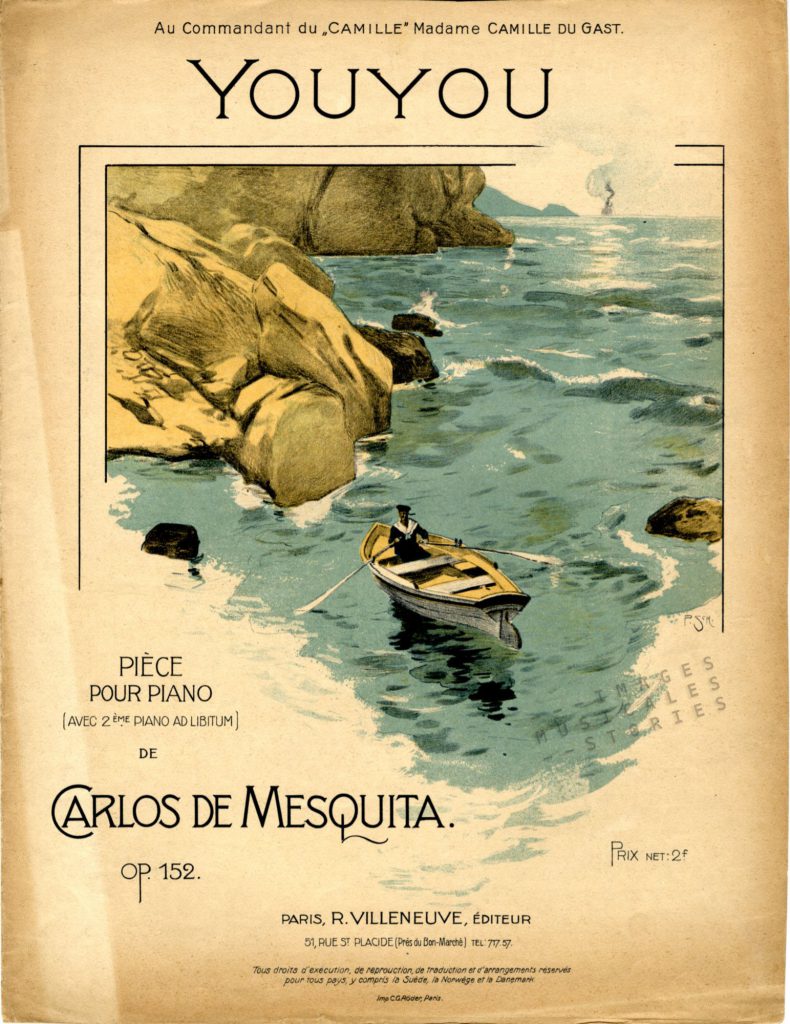
The illustration for the piano music Youyou is not the most captivating one. But its dedication “Au commandant du ‘Camille’ Madame Camille Du Gast” caught my attention.
A youyou is a small boat or a dinghy used to tender passengers between a ship and the shore. Here is a photograph of Mme Camille du Gast climbing from a youyou onto her motorboat, the Camille.
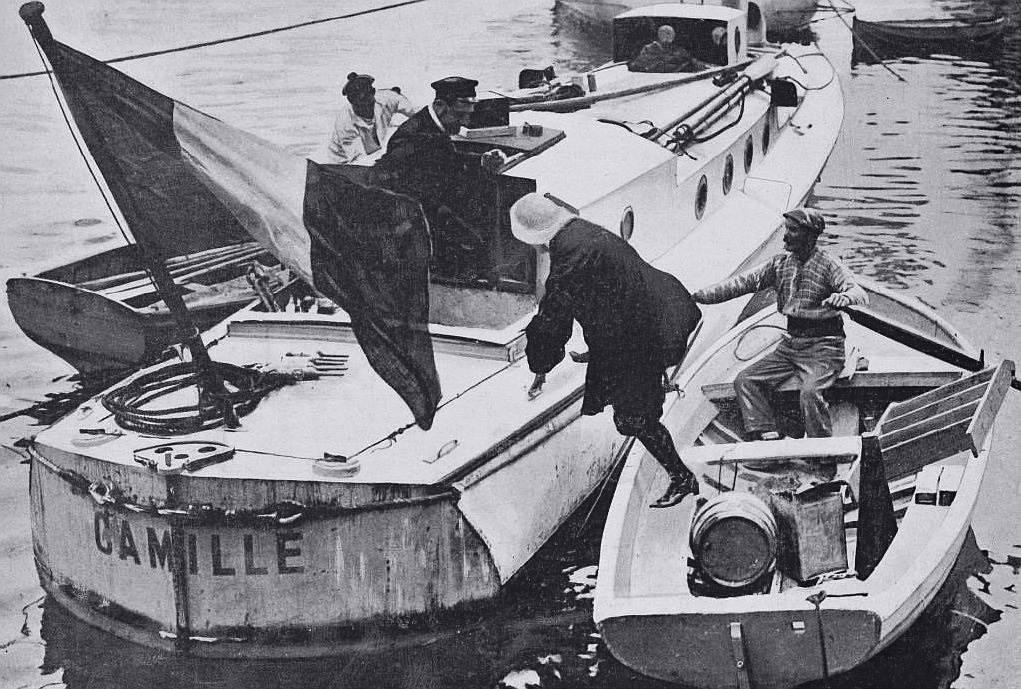
The adventurous Mme du Gast took part in the 1905 Algiers to Toulon race organised by the Paris newspaper Le Matin. Sadly, it would be the last time she boarded the Camille.
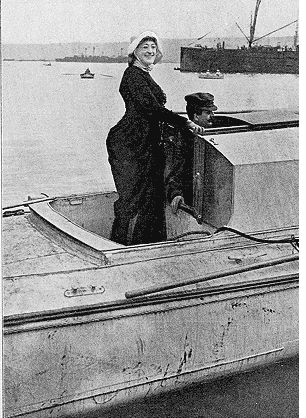
To ensure the safety of the seven competing motorboats, each one was accompanied by a torpedo boat destroyer. Moreover, two cruisers followed the race. Sixteen hours after leaving Algiers the Camille arrived in second place at Port Mahon, a harbour on the Spanish island Minorca.
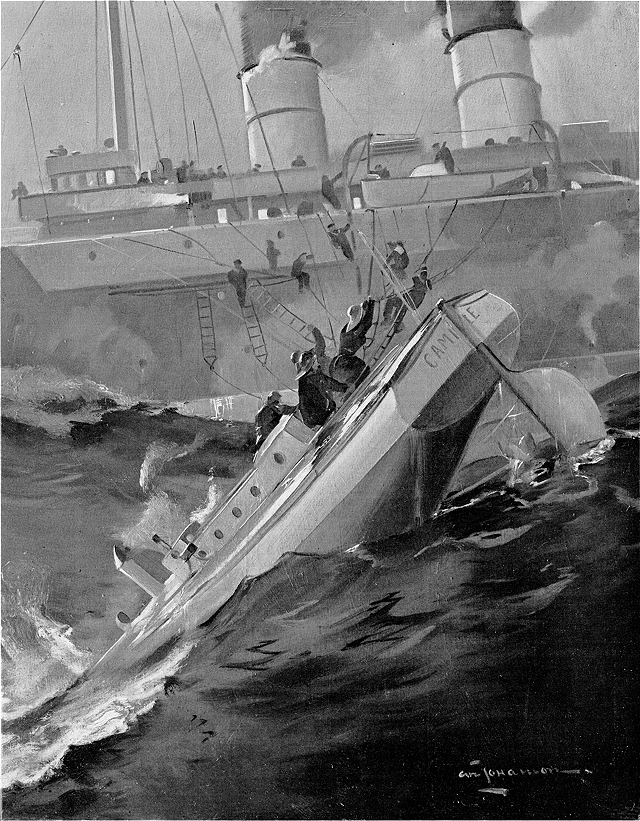
In the second part of the race the participants tried to reach Toulon, but this ended in disaster. All competitors and their crew had to be saved from the fury of a storm-swept Mediterranean. The Camille was engulfed by the violent sea. In a perilous operation led by the cruiser Kléber, the crew of the Camille was pulled aboard. But not before an exhausted Mme du Gast fell into the sea and was heroically rescued by a sailor. The Camille was left to the mercy of the waves.
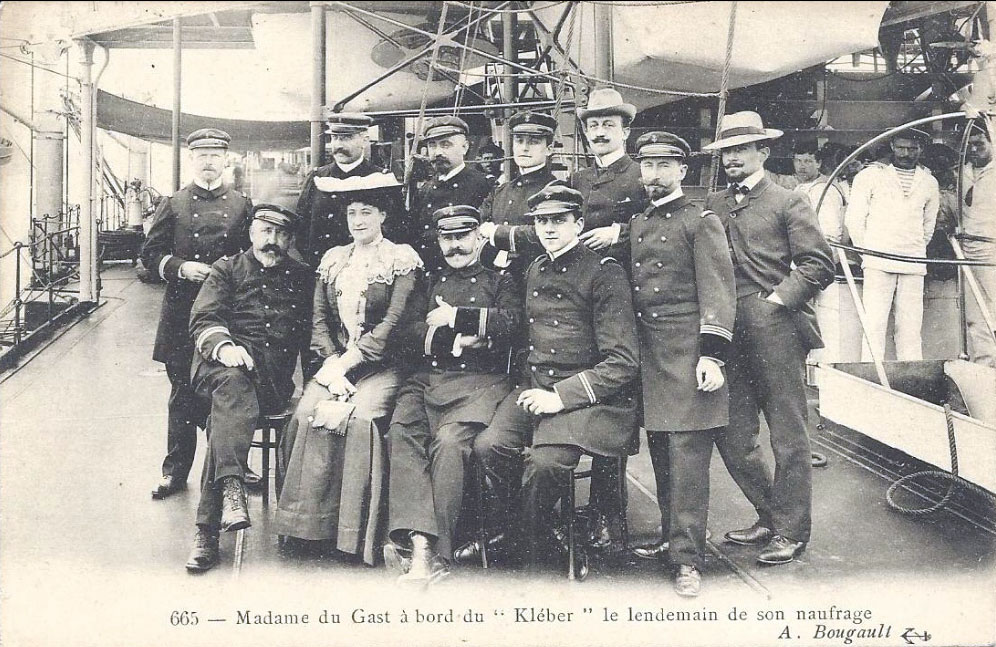
Two months later, Mme du Gast was declared the winner of the Algiers to Toulon race having come closest to finishing before sinking.
The 1905 Algier-Toulon race was not Mme du Gast’s first valiant exploit: she loved fencing, tobogganing, skiing, rifle and pistol shooting, ballooning, parachuting and horse training. She rode her first automobile around 1900 and participated in glamorous capital-to-capital car races, such as Paris-Berlin in 1901, Paris-Vienne in 1902 and Paris-Madrid in 1903.
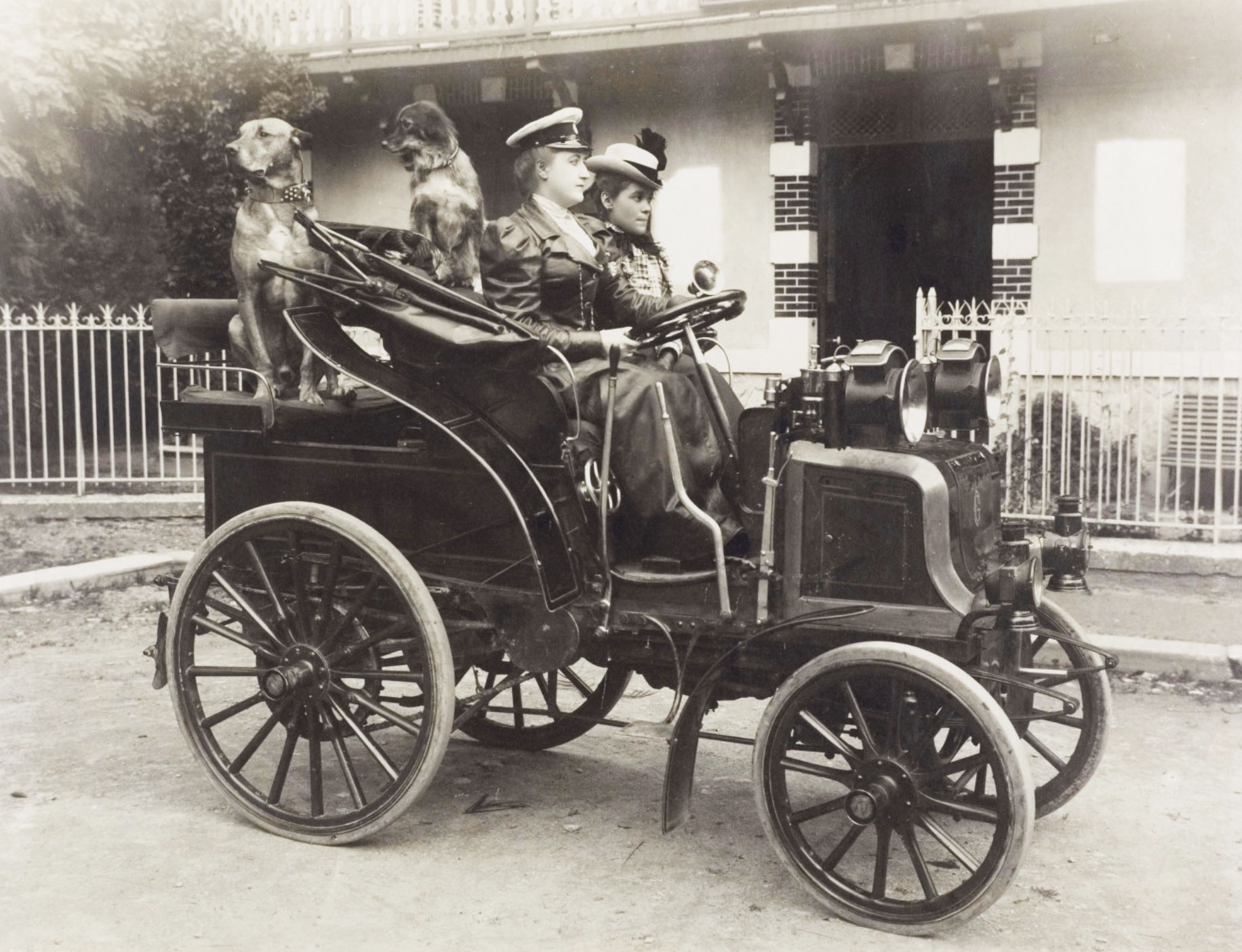
Mme du Gast’s sobriquet, the Valkyrie of motorsports, elegantly expressed her buxom figure, as seen on these photographs.
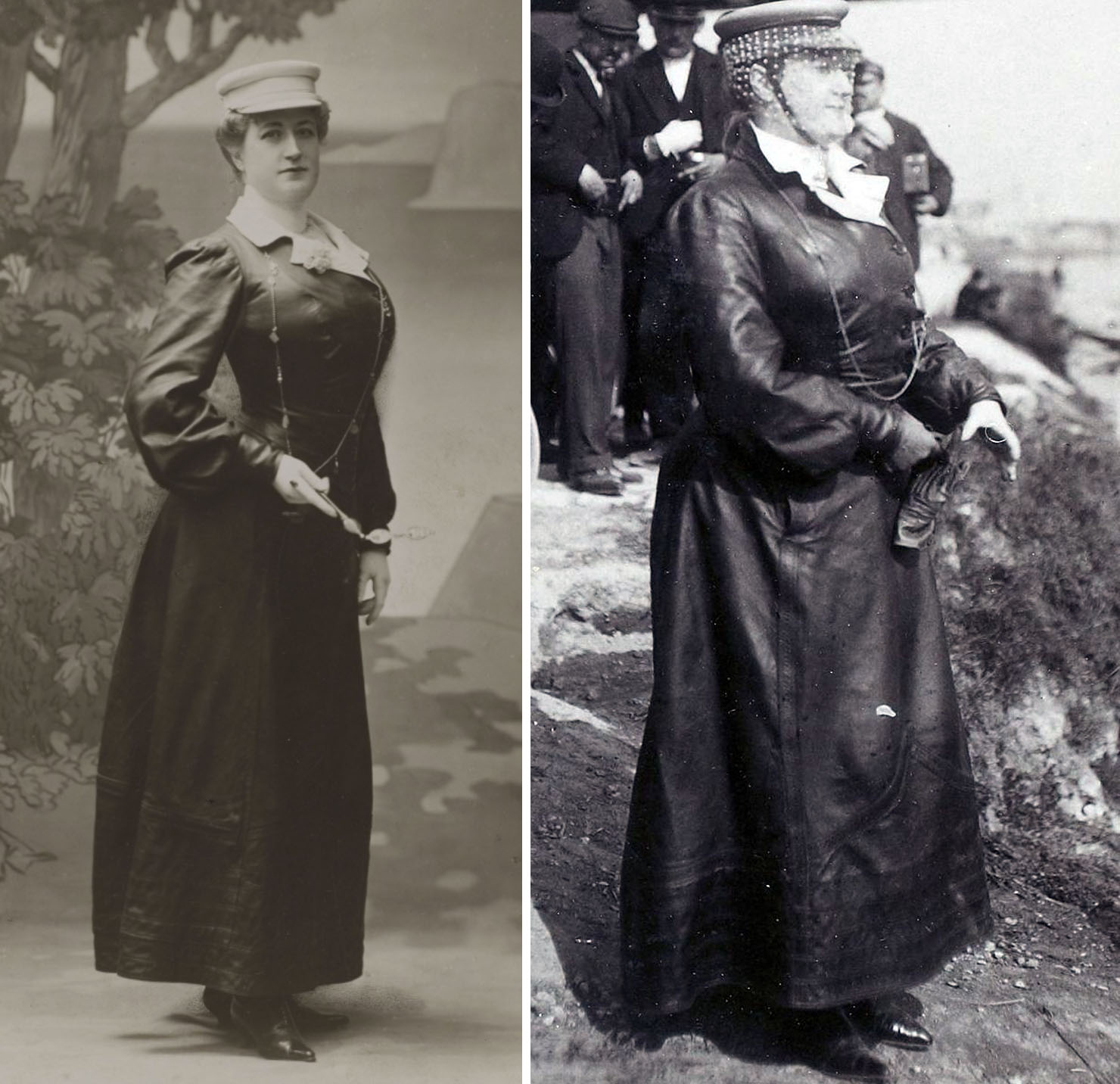
It is said that she had a very upright position when driving her motorised vehicles because of her corset. Looking at the picture with her at the rudder of her ‘canot‘, I find her silhouette mesmerizingly disturbing. I then imagine that she just donned a corset for official pictures, and immediately tucked the hindering girdle into a corner when going for action.
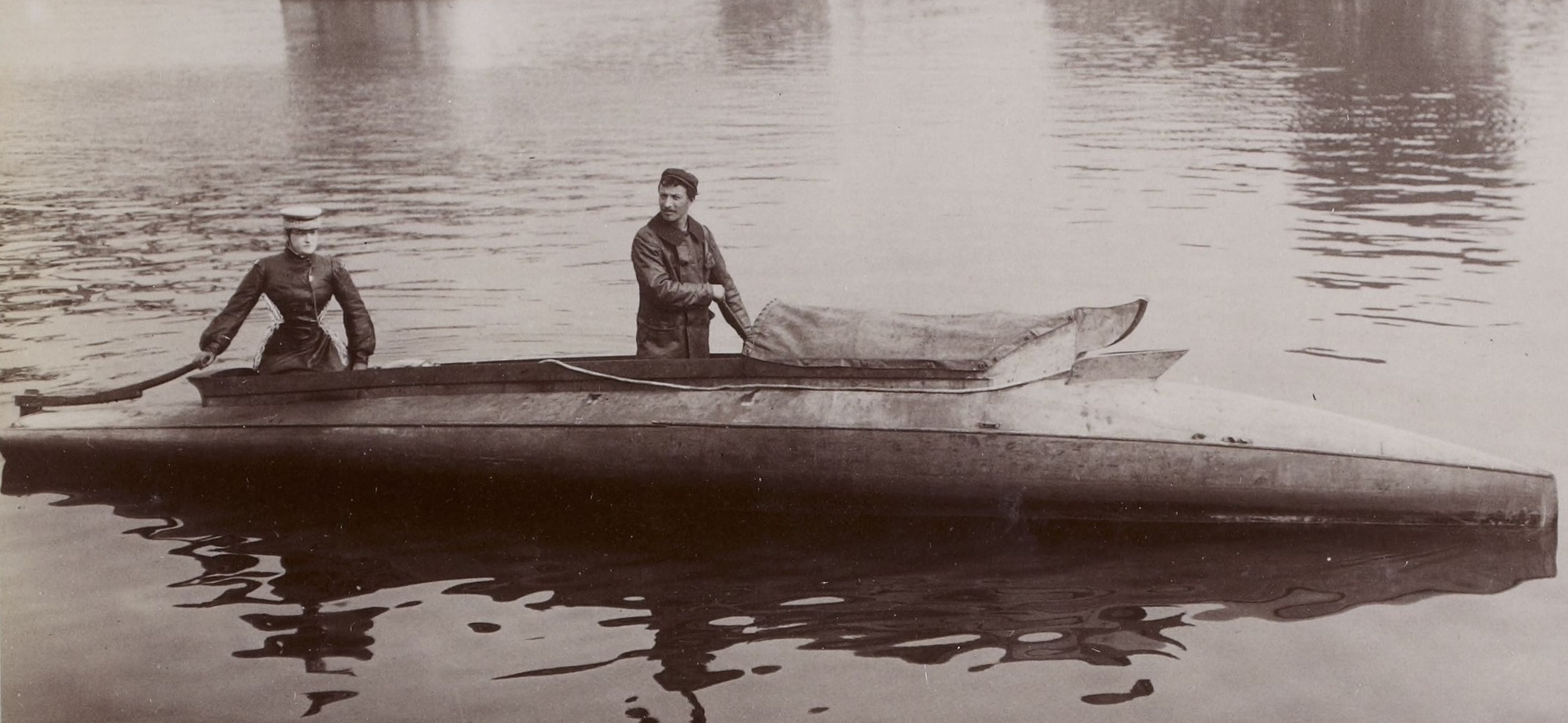
Disappointingly, it seems that du Gast’s perfect hourglass shape is but the result of photographic retouching. Look at the telltale pencil corrections around her waist, belly and hips on these magnifications.
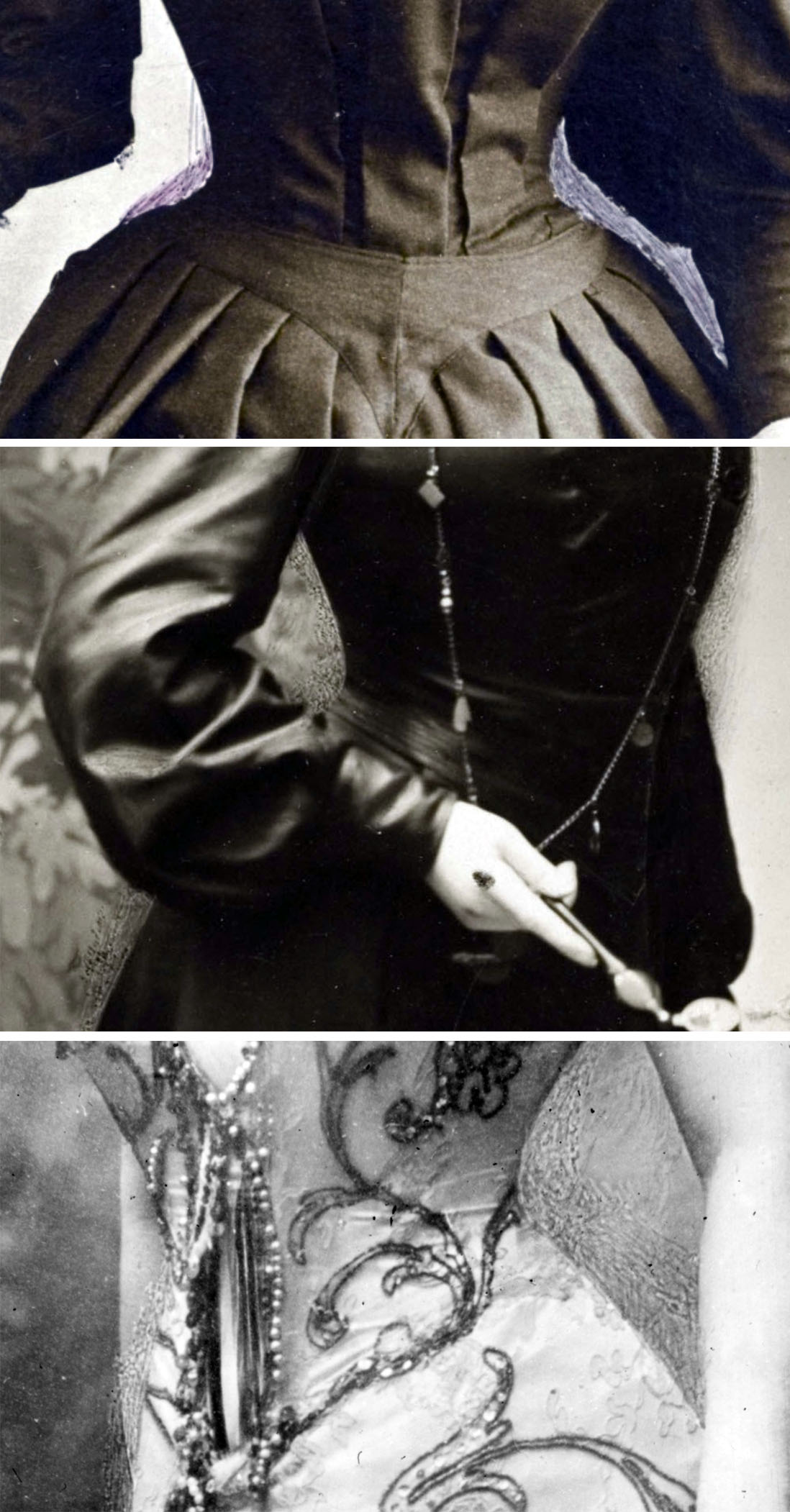
The composer of Youyou was Carlos de Mesquita, a Brazilian-born concert pianist and composer. In 1877, aged 13, he left Brazil to study piano and organ at the Conservatoire de Paris where he took lessons with Jules Massenet and César Franck. In the 1880s and 1890s he would introduce their work in Brazil, together with those of Delibes, Bizet, Gustave Charpentier and Saint-Saëns. Through his Concertos Populares, de Mesquita not only introduced a new repertoire in Brazil. He also tried to musically educate and appeal to a growing middle class. His noble intention was undoubtedly inspired by his colleague Gustave Charpentier, who founded in 1902 the Conservatoire Populaire Mimi Pinson for the musical schooling of working girls.
We found another Carlos de Mesquita’s sheet music in our Images Musicales collection. It is also dedicated to Camille du Gast and portrays her profile in a tangled Art nouveau floral design. A sign of respect, or was there also un peu d’amour..?
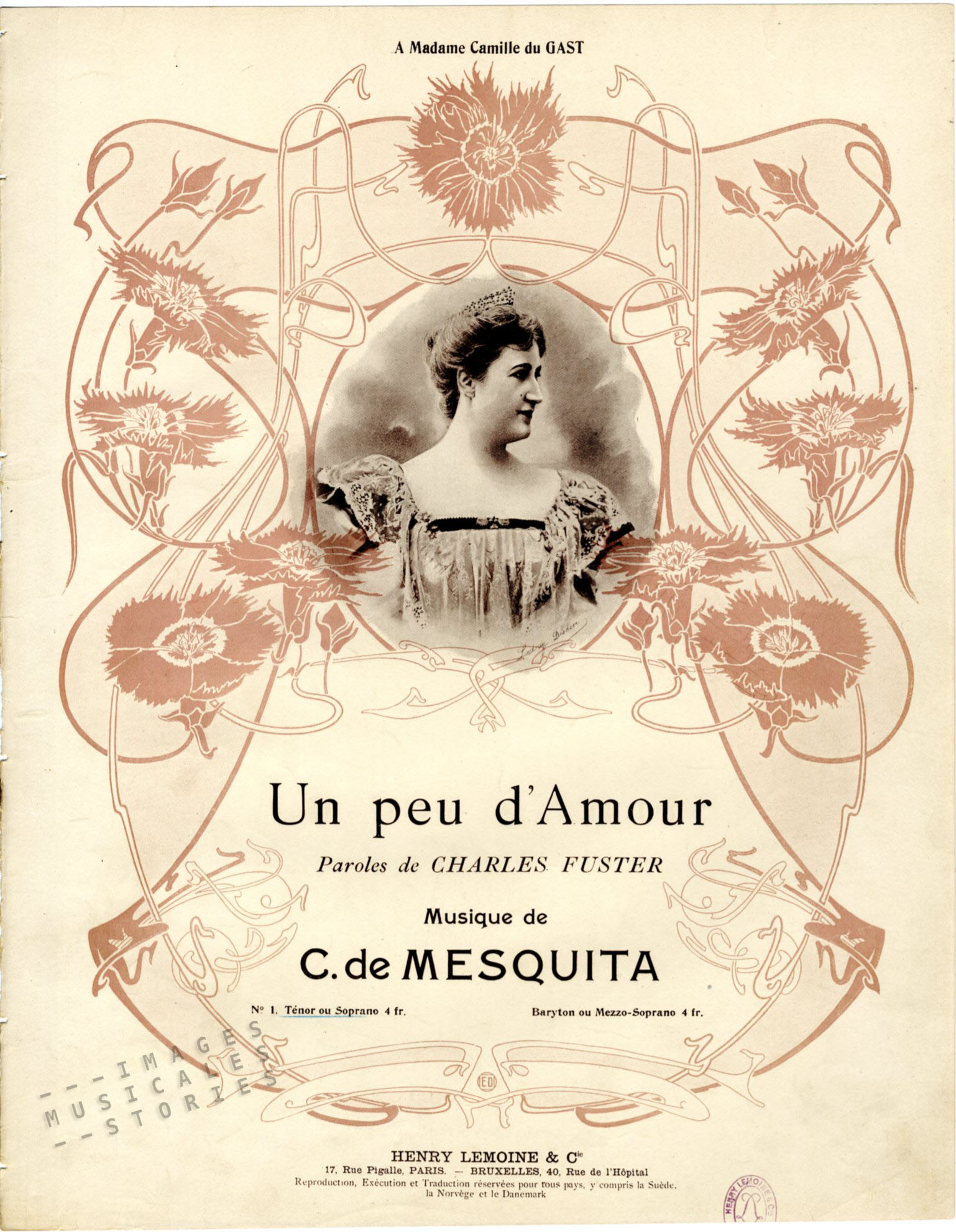
To prove her more artistic accomplishments, Mme du Gast who was a talented singer and piano player, gave charity recitals accompanied by Carlos de Mesquita. The newspaper La Presse describes one of her performances: “When Madame du Gast appeared, a flattering murmur ran through the audience. One was curious to hear Mme Du Gast, who yesterday was an intrepid automobile driver, who will be an aeronaut tomorrow, and who was revealed to us this evening as an excellent musician. Accompanied by M. Carlos de Mesquita, she has performed two pieces of this delicate composer. We celebrated both of them.”
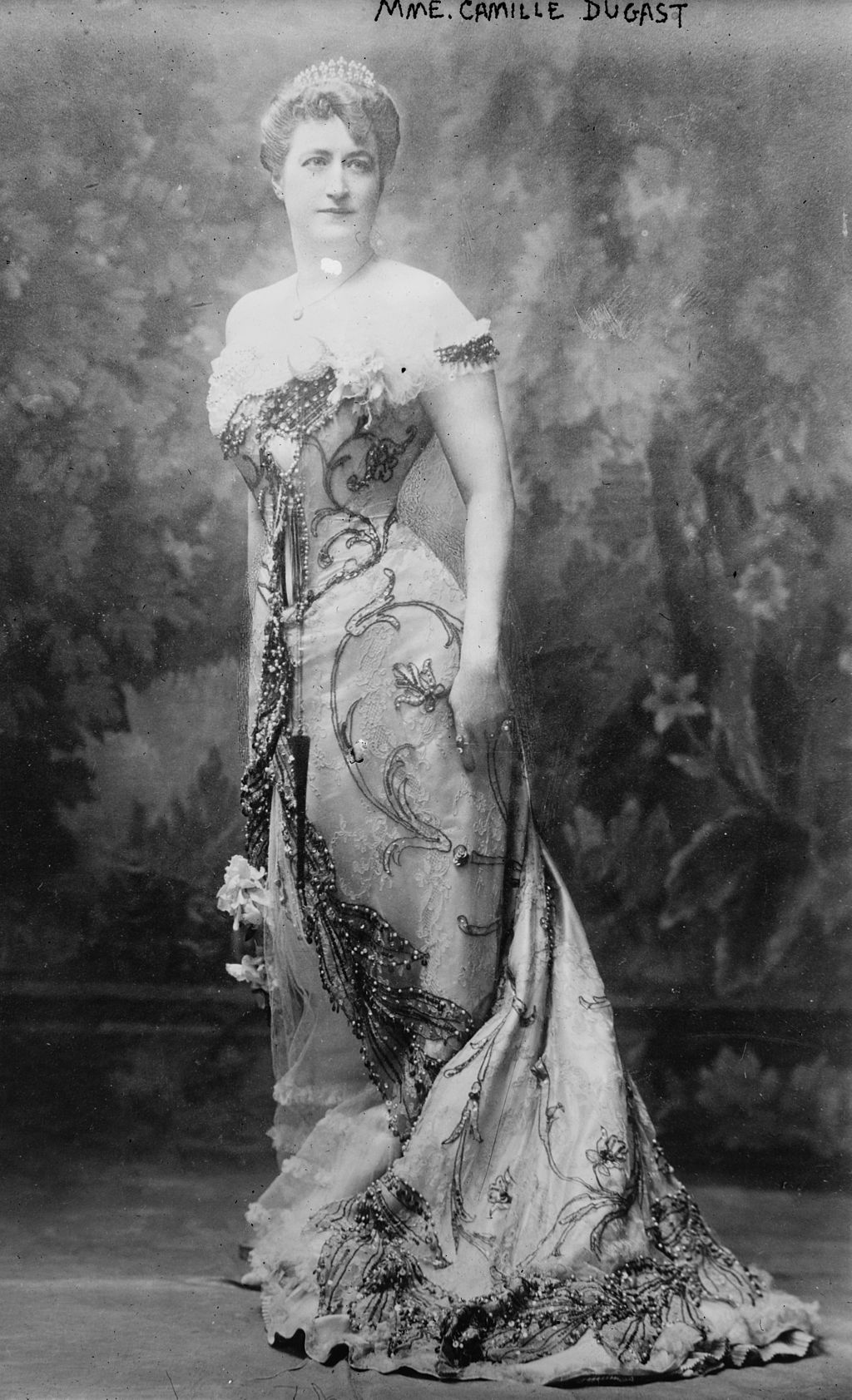
The mondaine Camille du Gast got entangled in a scandal following the trial against her brother and father whom she had accused of embezzlement. Maître Barboux acting for her relatives, hit below the belt when he showed the court a picture of a painting of a naked lady. Barboux claimed that the lady, only clad in a mask, was Mme du Gast (as he had been told by Mme du Gast’s father and brother). Oh my god!
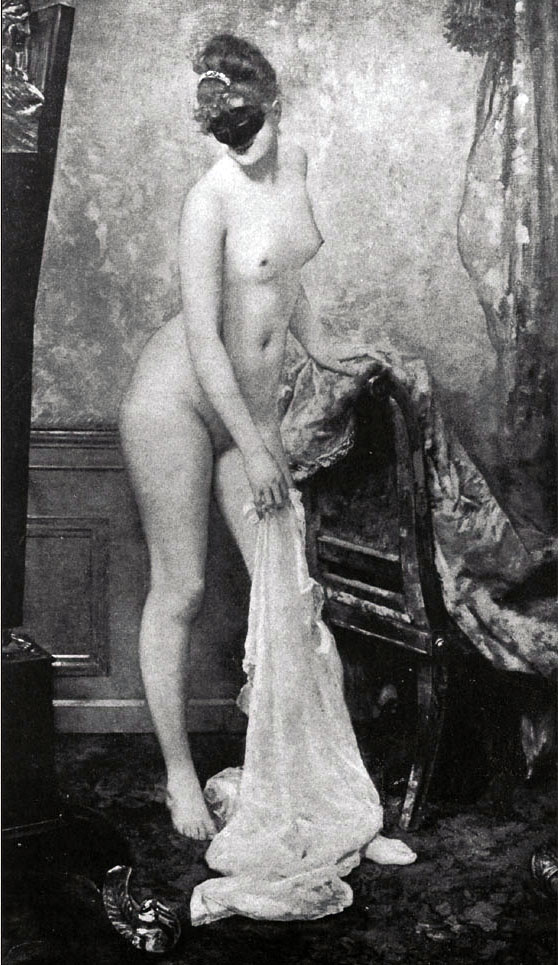
Mme du Gast’s libel action against Maître Barboux caused a sensation in Paris. Both the artist Henri Gervex and the girl who had stood model for the painting, Marie Renard, corroborated du Gast’s case. Still they were not given a hearing. Maître Barboux refused to apologise and moreover won the case on a legal technicality.

It is said that Madame du Gast who was present in the courtroom, had hidden a horsewhip in her parasol with the intention of administering correction to Maître Barboux. However, he prudently chose to leave the Palais de Justice by a private way, as he knew that Madame du Gast and her friends were in a very excited state after the decision of the Court.
 But that is not the end of the story, as the prince de Sagan, a friend and admirer of Mme du Gast, followed the lawyer to his house with the firm determination to avenge the honour of Mme du Gast. He slapped Maître Barboux in the face calling him an insulter of women. An hour later, following impeccable manners, the prince sent his card to Barboux’s house. The Australian West Gippsland Gazette (september 1902) further reports: “Maître Barboux, as already noted, is no longer a young man, although very active, and he has, in any case, passed the fighting age, so he prefers the legal way of obtaining satisfaction.“ Another lawsuit followed. Although the court accepted that the prince had acted in good fate, he was condemned to pay a 500 francs fine.
But that is not the end of the story, as the prince de Sagan, a friend and admirer of Mme du Gast, followed the lawyer to his house with the firm determination to avenge the honour of Mme du Gast. He slapped Maître Barboux in the face calling him an insulter of women. An hour later, following impeccable manners, the prince sent his card to Barboux’s house. The Australian West Gippsland Gazette (september 1902) further reports: “Maître Barboux, as already noted, is no longer a young man, although very active, and he has, in any case, passed the fighting age, so he prefers the legal way of obtaining satisfaction.“ Another lawsuit followed. Although the court accepted that the prince had acted in good fate, he was condemned to pay a 500 francs fine.
Each sheet music tells its own story. But we also found another truth: one Youyou may conceal another…

